Deer Haven Park surrounds a diverse ecosystem that is home to many forms of wildlife and plants. This 97-acre land has prairies, wetlands, woodlands, and lakes all squished together to create a unique area of land. The park was created in order to preserve this land and the many forms of life that call it home, but also to allow visitors to experience its beautiful landscape. On top of having towering trees and fields of wildflowers, Deer Haven Park is also home to the Amy Clark-Bader Bird Sanctuary making it a great place for any bird-watchers to visit. But this website is about plants, not about our flying friends. Therefore, I will get on with showing you the many wildflowers, trees, shrubs, and dangerous vines that can be found at Deer Haven Park.
Maps of Deer Haven Park
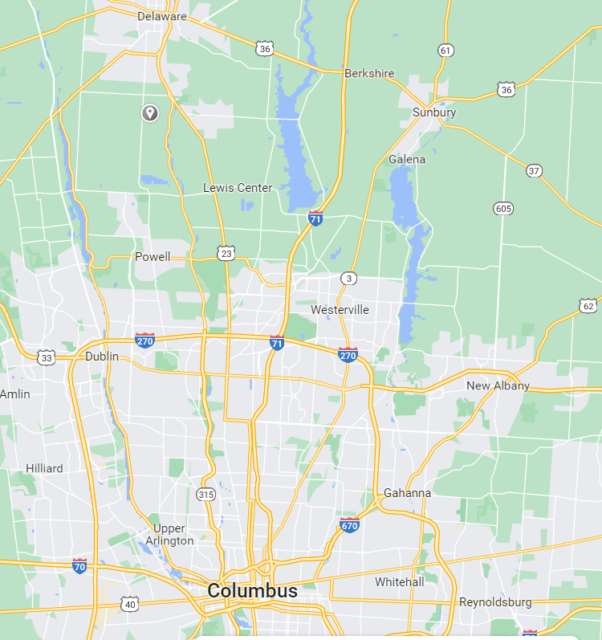
This is where to find Deer Haven Park relative to Columbus, OH. (Deer Haven Park is pinned in the top left of this map)
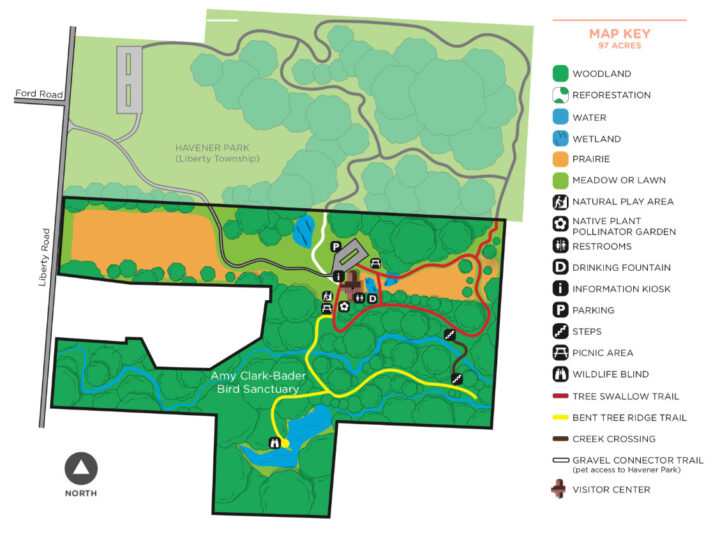
Map of Deer Haven Park with a key to indicate different ecosystems.
Wildflowers
Downy Goldenrod (Solidago puberula)
The first and last wildflower you’ll see walking along the paths of Deer Haven Park is Solidago puberula. These are by far the most numerous flowers in the park and can be found in the wetlands, prairie, and woodlands. I was amazed by the sheer amount of this plant in one place. The flowers, which grow in clusters on top of the plant, made for a beautiful spectacle as you looked across a sea of yellow.
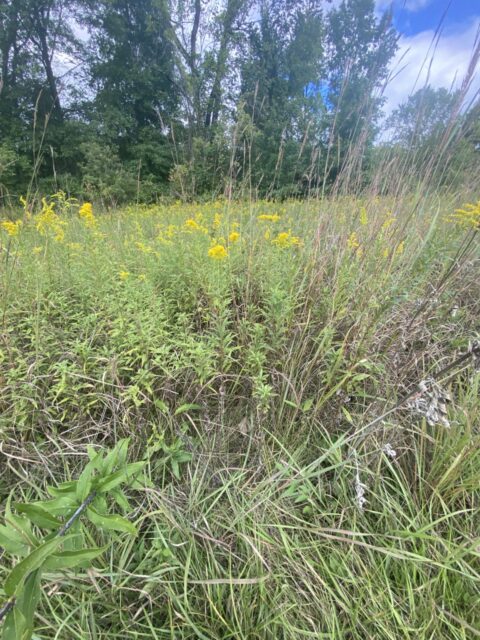

Did you know that species of goldenrod have been used in medicine? In fact, Solidago is Latin for “to heal”2. Though not a powerful medicine, goldenrods are known to have anti-inflammatory and diuretic effects2. This means you can put it in your tea to reduce pain and swelling, or if you want to avoid a UTI. However, do this at your own risk as the effects are not very well studied, and some species are used more than others. These claims may not even be true, but this hasn’t stopped people from trying.
Kalm’s Lobelia (Lobelia kalmii)
Look at this beautiful blue flower! I had to stop and take a picture to share here. Kalm’s Lobelia is a common fall flower in Ohio that is perfect for the wet areas of Deer Haven Park. I found this particular plant not far into the woodlands area of the park. The flowers grow bilaterally in a cuplike structure with two smaller lobes on the top and three larger lobes on the bottom. They form at the top of the plant, so it’s easy to see the blue petals poking out of neighboring wildflowers and grass.
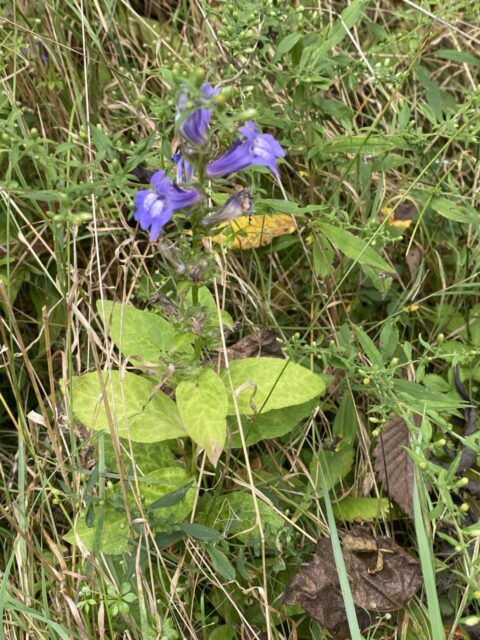

Trees
Common Cottonwood (Populus deltoides)
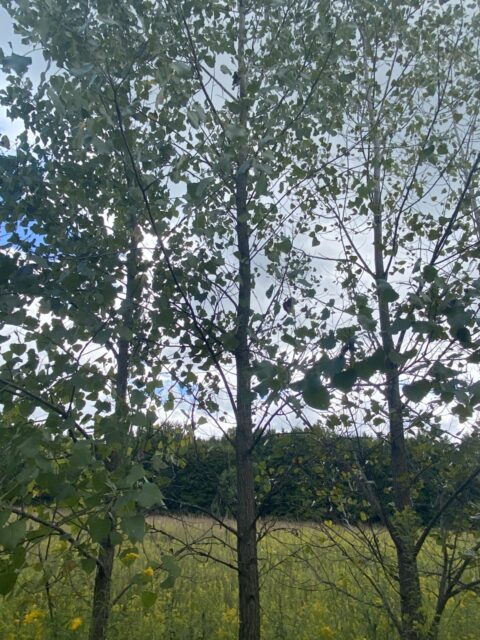
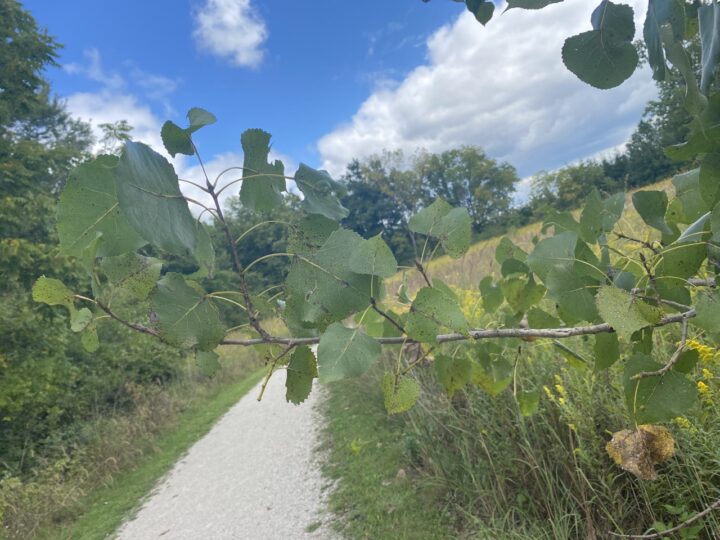
As you walk along the eastern prairie, you’ll notice three trees with alternate simple leaves. However, the stems of these leaves are flat instead of round, this is a sign that you found a cottonwood tree. These trees prefer to grow near wetlands, which is close to where I found them. These trees are fairly common in North America, which would explain their name. Along with their abundance, their wood is strong, so these trees are often cut down to be used in furniture and other woodworking endevors4.
Honey Locust (Gleditsia triacanthos)
This mean-looking tree is known as a Honey Locust. It’s easily identified by its thorns that look straight out of a horror movie. I wish I could tell you that these thorns, which have thorns growing on the thorns, were not dangerous, but then I would be lying. It might interest you to know that these thorns have been used in animal traps, and as spear points throughout North American History5. Well isn’t that a fun fact? The wood is tough enough to pierce you and has a history to prove it. Luckily as long as you don’t run full force into this tree you should be fine.
I also want to note that the leaves seen in the first picture aren’t from the Honey Locust. They are actually from a vine that wrapped its way around the thorns as it made its way up the tree. We’ll get to this vine in the next section. The leaves of Gleditsia triacanthos grow farther up, near the top of the tree. The last picture shows the pinnately (and sometime bipinnately4) leaves, which I had to take from a different Honey Locust that had its leaves a little closer to the ground.

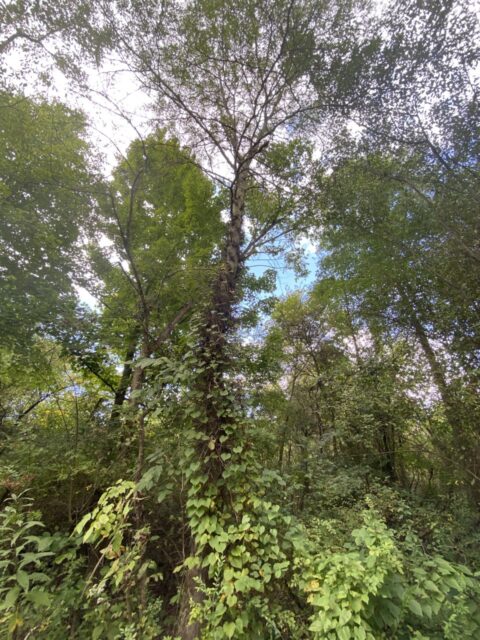
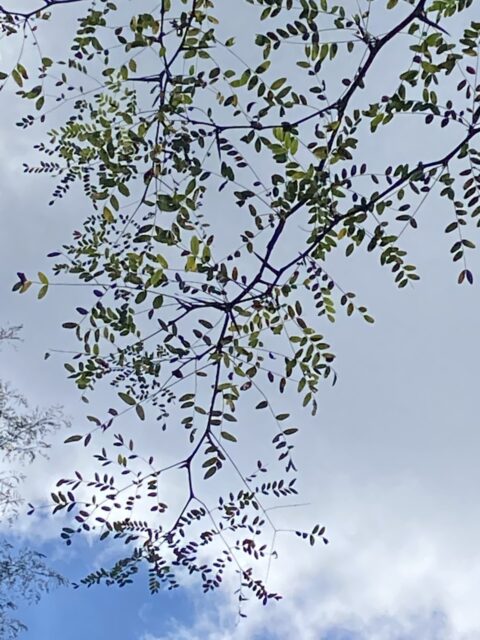
Shrubs and vines
Wild Yamroot (Dioscorea villosa)
This particular Wild Yamroot was found growing around the Honey Locust I just mentioned. This vine has characteristic long heart-shaped leaves which alternate as they ascend. It may interest you to know that this plant also has medical uses going back to the eighteenth century3.
There are a number of medical conditions that it supposedly can help, but I once again urge you to do your own research and talk to a doctor before resorting to using Wild Yamroot to ease your symptoms. For example, there is a disproven claim that the diosgenin in yamroot can be used as an estrogen therapy since diosgenin can be used to synthesize estrogen3. The problem with this is that there are different chemicals and methods used in the lab than in your body so your body will be unable to synthesize estrogen. Also, just because a molecule is a precursor to a helpful molecule doesn’t mean it’s safe, in fact, it could have drastically different effects than the molecule it can be made into. But I’m getting off topic, there are uses that are being studied by researchers including anti-inflammatory effects for arthritis and anticancer effects3. The potential in plant-based medicine is amazing!
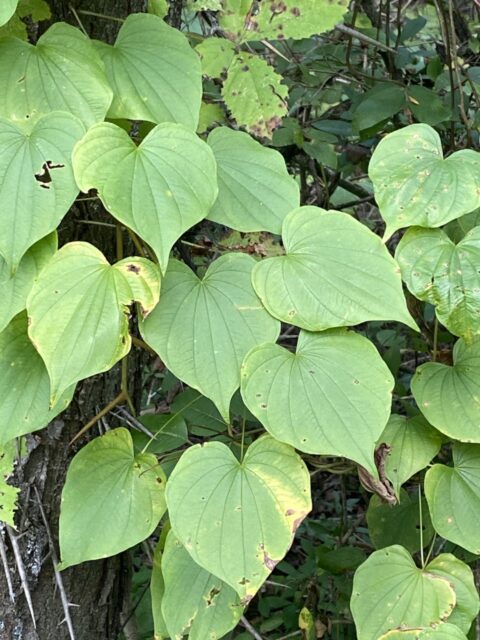
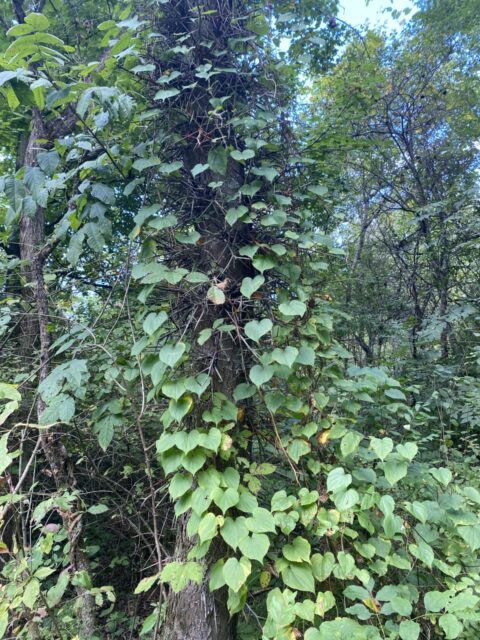
Amur Honeysuckle (Lonicera maackii)
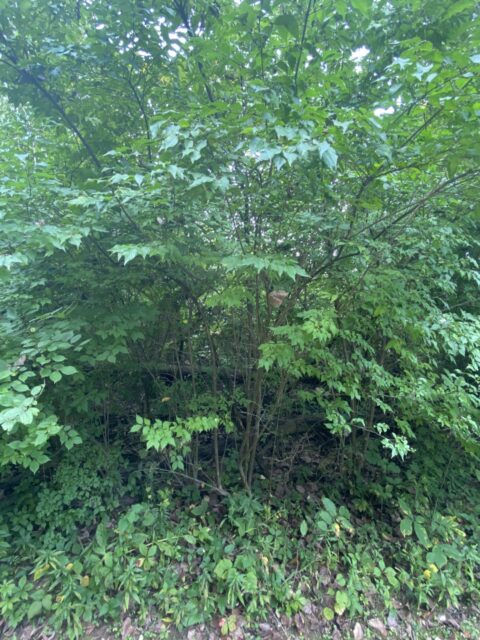
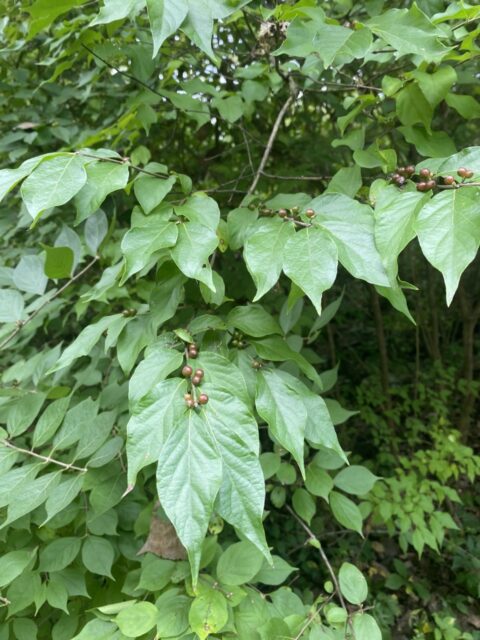
The Amur Honeysuckle is an invasive shrub species in Ohio characterized by its pinnately compound leaves and bright red fruits. Though the fruit is not yet mature, the orange-green color indicates that will soon turn a delicious looking red, but don’t try to eat it unless you want some gastrointestinal problems. These shrubs branch out of the ground in multiple directions covering an area up to fifteen feet wide1. They can also survive many of the extreme conditions across the Northeastern United States, but they are not a native species1.
These shrubs were brought into Ohio about seventy years ago, and have since spread to every corner, destroying vegetation and harming habitats1. Their effect on the ecosystem is considered harmful, as they beat out plants that provide more nutritious fruit for birds and other wildlife, as well as starve smaller plants of sunlight with their wide array of leaves1. Like other invasive plants that spread quickly, these should be removed if able. Luckily, when they are still young, you can easily pull them out of the ground since they don’t have a well-established root system1.
Poison Ivy
Rhus radicans
If you’re new to exploring your local nature spots you may be wondering what that itchy rash you have is. As long as you haven’t been doing anything else particularly adventurous, it’s probably from poison ivy. Poison ivy is abundant, especially in Ohio, and contains an oil that will irritate your skin if you touch any part of the plant (at any time of year). Luckily for you, Rhus radicans is easy to identify, so you won’t have to worry about getting another rash.
Let’s first look at the picture on the left. You can notice a vine crawling up the tree behind the leaves. This vine has many roots that it uses to help climb the tree. Therefore, it’s a good rule of thumb not to touch any hairy-looking vines. The picture on the right has two more ways to identify this species of plant. One giveaway is the leaves. Notice how they grow in threes, which is why you should also stay away from plants with leaves in threes. I also want to note, that it’s common to hear that poison ivy will have a red stem, or the leaves will appear oily. It’s true that this is sometimes the case, but you can clearly see in this picture that the stems are not red and the leaves are rather dull. The final giveaway is the fruit. You can see clusters of green fruits growing at the base of the leaves. These will eventually turn white, which is another characteristic of poison ivy.
To summarize, don’t touch hairy vines, stay away from plants with three leaves, and look out for white fruits. If you follow these rules you should be fine. If you’re still concerned, just don’t touch anything you’re suspicious of until you’ve positively identified it. Stay safe out there nature lovers.
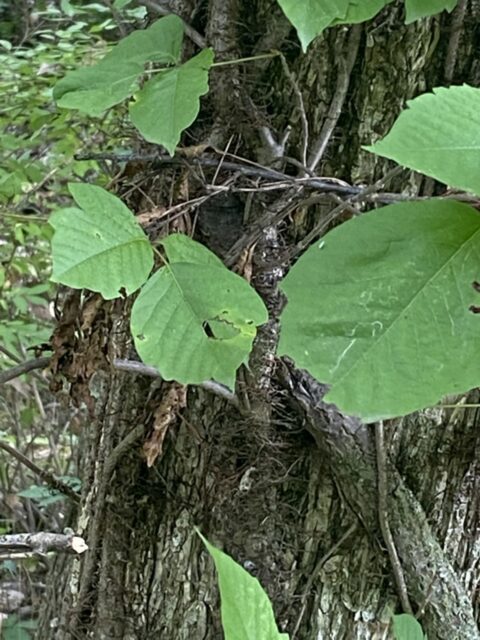

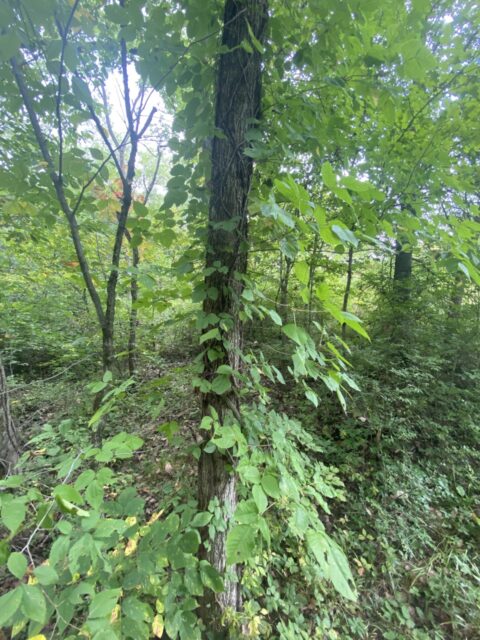
Four High CC Plants & Four Low CC Plants
Species found at Deer Haven Park
Downy Goldenrod (Solidago puberula)
CC Value = 5, FQAI = 1.1
Kalm’s Lobelia (Lobelia kalmii)
CC Value = 9, FQAI = 2.0
Common Cottonwood (Populus deltoides)
CC Value = 3, FQAI = 0.7
Honey Locust (Gleditsia triacanthos)
CC Value = 4, FQAI = 0.9
Wild Yamroot (Dioscorea villosa)
CC Value = 4, FQAI = 0.9
Amur Honeysuckle (Lonicera maackii)
CC Value = 0, FQAI = 0
Poison Ivy (Toxicodendron radicans)
CC Value = 1, FQAI = 0.2
Nodding Onion (Allium cernuum)
CC Value = 5, FQAI = 1.1
Virginia Creeper (Parthenocissus quinquefolia)
CC Value = 2, FQAI = 0.4
Red Maple (Acer rubrum)
CC Value = 2, FQAI = 0.4
Sugar Maple (Acer saccharum)
CC Value = 5, FQAI = 1.1
Silky Dogwood (Cornus amomum)
CC Value = 2, FQAI = 0.4
Beech (Fagus grandifolia)
CC Value = 7, FQAI = 1.6
Norway Spruce (Picea abies)
CC Value = 0, FQAI = 0
Common Spicebush (Lindera benzoin)
CC Value = 5, FQAI = 1.1
New England Aster (Aster novae-angliae)
CC Value = 7, FQAI = 1.6
Sensitive Fern (Onoclea sensibilis)
CC Value = 2, FQAI = 0.4
Broadleaf Cattail (Typha latifolia)
CC Value = 1, FQAI = 0.2
Chinquapin Oak (Quercus muehlenbergii)
CC Value = 7, FQAI = 1.6
Wild Blackberry (Rubus allegheniensis)
CC Value = 1, FQAI = 0.2
Highest CC Plants
Kalm’s Lobelia (Lobelia kalmii) = 9

Copied from above
Kalm’s lobelia is one of the highest CC plants found at Deer Haven Park. This is because Lobelia kalmii can only survive in specific environments and is not very tolerant of changes in pH or nutrient levels.
Beech (Fagus grandifolia) = 7

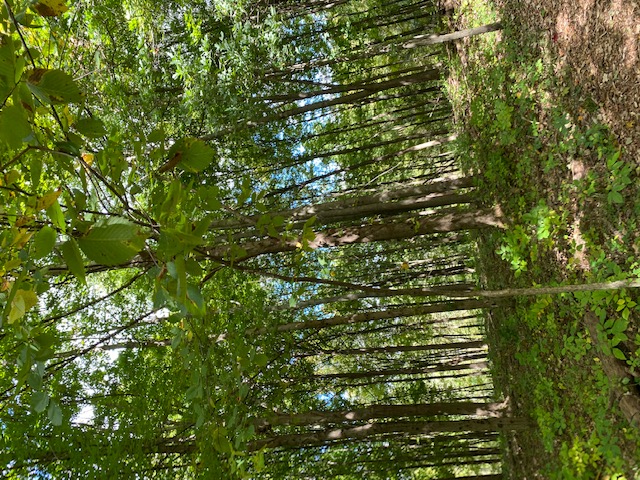
New England Aster (Aster novae-angliae) = 7
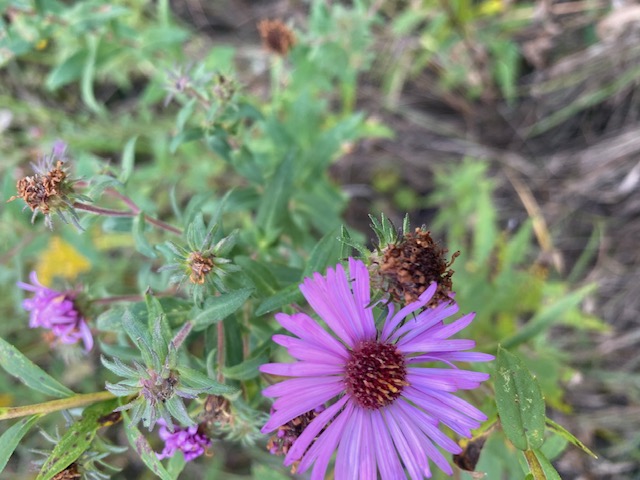
Chinquapin Oak (Quercus muehlenbergii) = 7
Lowest CC Plants
Broadleaf cattail = 1
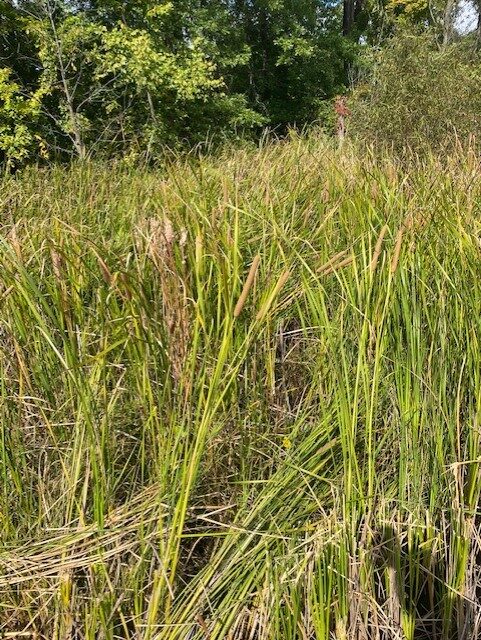
The broadleaf cattail has one of the lowest CC values found in Deer Haven Park because it is able to grow in various types of plant communities.
Poison Ivy (Toxicodendron radicans) = 1

Copied from above
Sensitive Fern (Onoclea sensibilis) = 2
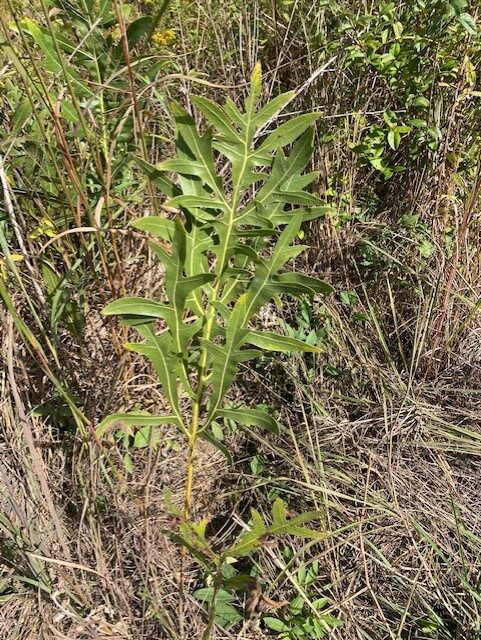
Wild Blackberry (Rubus allegheniensis) = 1


Invasive Species
I was unable to find four invasive plants that were listed on the website at Deer Haven Park other than ones I have already used on this webpage.
Substrate Associated Plants
Beech (Fagus grandifolia)

References:
(1) Amur Honeysuckle. (n.d.). https://ohiodnr.gov/discover-and-learn/plants-trees/broad-leaf-trees/amur-honeysuckle-lonicera-maackii
(1) McCulloch, M. (2019) Goldenrod: Benefits, Dosage, and Precautions. Healthline. https://www.healthline.com/nutrition/goldenrod#intro
(2) McGrane, K. (2020) Does WIld Yam Root Have Any Health Benefits? Healthline. https://www.healthline.com/nutrition/wild-yam-root#:~:text=Wild%20yam%20root%20contains%20diosgenin,purposes%20(%201%20%2C%203%20).
(3) National Audubon Society Trees of North America (1st ed.).(2021). New York, New York: Alfred A. Knopf.
(4) Petrides, G. A. (1958). A Field Guide to Trees and Shrubs (2nd ed.). Houghton Mifflin.
